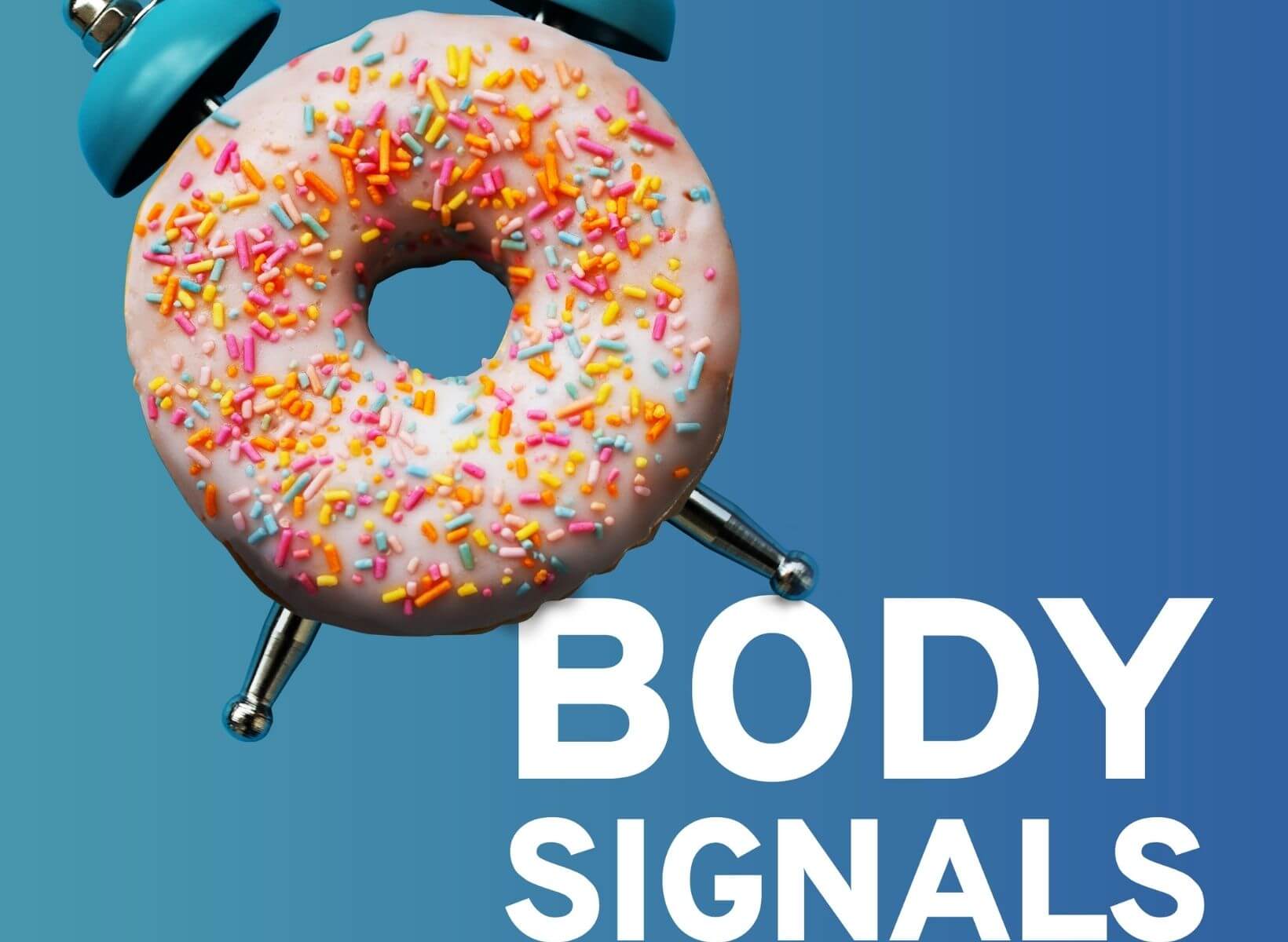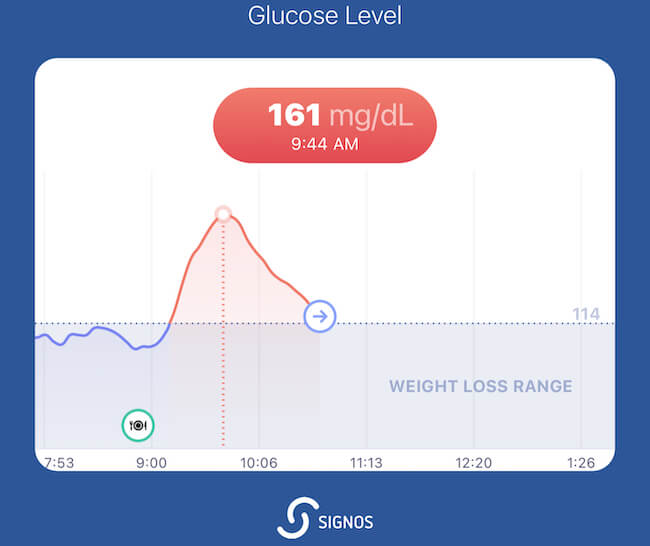Who doesn’t love sunshine? A sunny day not only lightens your mood and makes outdoor activities more fun, but it can also be beneficial for your blood sugar levels. While it’s important to be careful of the dangers of too much sun exposure, sunlight has generally been found to be beneficial for your blood sugar and metabolic health.
Research has found that sun exposure can help with various metabolic health markers, including blood sugar. In one study of over 10,000 participants, increased exposure to sunlight significantly impacted blood glucose levels, cholesterol levels, and insulin sensitivity.1
In this article, we’ll cover how exactly sunlight can help your blood sugar levels and how you can safely reap the benefits of sunny days in the future.
{{mid-cta}}
How Exactly Does Sunlight Lower Blood Sugar Levels?
Sun exposure can benefit your blood sugar levels by increasing your vitamin D levels, regulating your circadian rhythm, and increasing your mitochondrial metabolic rate. Read on to learn how these mechanisms work and how they can impact your blood sugar.
Vitamin D
While you can get some vitamin D from certain foods like salmon and eggs, we get most of our vitamin D from exposure to UV light in sunlight. Vitamin D is important for bone health, our immune system, and regulating insulin and blood sugar. Several studies have suggested that low vitamin D levels can increase the risk for type 2 diabetes.2, 3
The method by which vitamin D affects glucose levels and the risk of diabetes is not fully understood. Still, vitamin D is thought to enhance insulin sensitivity and pancreatic beta-cell function. Vitamin D regulates insulin receptor function and stimulates insulin release from pancreatic beta-cells.4, 5 Vitamin D is an important nutrient for your immune system and can lower inflammation. Chronic inflammation is involved in developing insulin resistance, and vitamin D supplementation has been shown to reduce inflammatory and autoimmune responses, improving insulin sensitivity and having protective effects on pancreatic beta-cells.6, 7
Your body needs to be exposed to sunlight to benefit from healthy vitamin D levels, but you might need more sunlight to produce adequate amounts of this nutrient. Approximately 35% of adults in the United States have a vitamin D deficiency, either because they don’t get enough through their diet or they don’t have enough exposure to sunlight. This is your sign to get outside and soak up some sun to get all the health benefits of vitamin D.
Circadian Rhythms
Your circadian rhythm — the sleep-wake cycle — impacts everything from your energy levels and appetite to your hormones and blood sugar. Your circadian rhythm is important for many aspects of metabolic health. Unfortunately, in today’s modern society, artificial light can easily disrupt it after dark, electronics with blue light, and an altered sleep schedule. To have a consistent circadian rhythm, light is one of the most important factors to consider. Light has the most significant influence on your body’s circadian rhythm compared to all other outside factors. Your body works on a 24-hour cycle regulated by the light you’re exposed to. Your body senses when exposed to light or darkness, which impacts how the cells in your body function.8
Having misaligned or disrupted circadian rhythms can have various negative effects on your metabolic health, and research has shown that it can even increase your risk of serious medical conditions like type 2 diabetes. Multiple studies have shown that having a disrupted circadian rhythm decreases glucose tolerance, increases insulin resistance, and can lead to type 2 diabetes and obesity.9 – 13
Exposure to sunlight throughout the day, especially early in the morning, can help establish a consistent and healthy circadian rhythm. This sets your circadian rhythm for the day, stimulating your body to produce the right hormones, such as cortisol and melatonin, at appropriate times of the day. Insulin is another hormone that is regulated by the circadian rhythm. Once your body is aligned with natural light cycles, it will better regulate blood sugar through hormones like insulin and cortisol.
Mitochondrial Metabolism
In high school biology, you probably learned that mitochondria are the cell's "powerhouse”. They exist in your cells and take up glucose as fuel to produce the energy (in the form of ATP) that your cells need to function. A recent study has shown that red light stimulates energy production within mitochondria. In other words, exposure to red light increased glucose consumption and ATP production within mitochondria. This, in turn, led to decreased blood glucose levels in the study participants and reduced postprandial glucose spikes.14
This study shows that red light can help reduce blood glucose levels, but how can we use this information? We live in a society now that is often dominated by blue light. Most people spend a large part of their day in the presence of LED lights and devices like cell phones and computers, which dominate in blue light and have very little red light. But you know what does have red light? Sunlight!
The sun gives off about equal amounts of red and blue wavelengths. If you spend time outside in the sun, you will be exposed to more red light, which can counteract the blue-light-dominant environments we often find ourselves in. Over time, this may increase your mitochondria's metabolic function and help regulate your blood sugar levels.15
Other Benefits of Sun Exposure for the Mind and Body

We’ve all experienced that happiness when we see winter ending and the beginning of brighter, sunnier days. Sunlight is widely known to make people feel good, and there are various scientific reasons for this. One is that sunlight can increase serotonin levels, a chemical in your brain that can boost your energy levels and make you feel calm, happy, and focused. Without enough sunlight, serotonin levels can decrease and cause a type of depression called Seasonal Affective Disorder (SAD).
Sunlight can positively impact a variety of other health factors, including:
- Cancer: Those who live in areas with less sunlight are more likely to experience certain types of cancers, such as colon, ovarian, pancreatic, and prostate cancer.16
- Sleep: Sunlight helps you sleep better by regulating your circadian rhythm, which, in turn, can support many other health factors like energy levels and the immune system.
- Blood Pressure: Research has shown a link between sun exposure and lower blood pressure levels, as well as lower death rates from cardiovascular issues.17
- Skin Conditions: Sunlight has been shown to prevent and treat various skin diseases like psoriasis and eczema.
Potential Risks of Sun Exposure
Some exposure to sunlight is important for health, but overexposure can harm your health. The most serious health effect of excessive sun exposure is skin cancer. The UV light from the sun can damage your skin, leading to premature aging and skin cancers such as melanoma. One in every 5 Americans will develop skin cancer at some point in their lifetime, and melanoma is the most deadly form of skin cancer, causing about 75% of skin cancer deaths.18
Other health effects include cataracts, eye damage from spending too much time looking in bright sunlight, heat exhaustion, and dehydration. This can be especially dangerous for people with diabetes because they can get dehydrated more quickly, resulting in elevated blood sugar levels.19
The negative effects of sun exposure are very preventable by taking appropriate precautions. If you will be spending more than about 15 minutes in the sun, wear sunscreen and re-apply it every two hours. Wear sunglasses with UV protection, and make sure to stay well-hydrated.
If you're worried about chemical exposure from sunscreens, mineral sunscreens are a fantastic alternative. They contain ingredients like zinc oxide and titanium dioxide, which act as a barrier on your skin, reflecting those harmful UV rays away.
For top-notch sun protection, dermatologists often suggest using a broad-spectrum sunscreen with an SPF of at least 30. Brands like Supergoop or Sun Bum offer great options.
<p class="pro-tip"><strong>Also Read: </strong><a href="hot-flashes-and-blood-sugar">Can Blood Sugar Impact Hot Flashes?</a>.</p>
Ways to Spend More Time in the Sun
If you spend most of your days indoors, it might be time to incorporate more time in the sunshine. Some ways you can do this are:
- Opt for Exercise Outside: If you are a regular gym-goer, try incorporating a couple of days per week in which you exercise outside instead of indoors. This could involve going for a bike ride, running, walking, or playing an outdoor sport. If you have weights available, you can do weighted exercises outside your backyard or a park.
- Eat Meals Outside: Mealtimes are often the most relaxed parts of our day when we can just sit and eat. It’s easy to transport ourselves outside for a few minutes of uninterrupted sunshine.
- Find Indoor Spaces With Natural Lighting: If you don’t have much time to get outside, you can still get sun exposure by spending time inside with lots of natural light. Try moving your workspace to a window where you can feel and see sunlight.
Learn More About How to Improve Blood Sugar Health With Signos’ Expert Advice
Are you looking for other natural ways to improve your blood sugar levels? The Signos program can help you discover the best lifestyle habits for your body. Signos shows you how your daily activities affect your glucose levels so you can make small changes to reach your health goals, whether it is sun exposure, stress levels, or the food you eat. With insights from the Signos CGM and Signos experts’ advice, you can achieve weight loss, better metabolic health, and more. You can learn more about glucose levels on Signos’ blog. Not sure if you’re a good fit? Find out by taking a quick quiz.
<p class="pro-tip"><strong>Learn More: </strong><a href="what-affects-blood-sugar">What Affects Blood Sugar: Factors Of Blood Sugar Swings</a>.</p>
- Item 1
- Item 2
- item 3
Topics discussed in this article:
References
- Noordam R, Ramkisoensing A, Loh NY, et al. Associations of Outdoor Temperature, Bright Sunlight, and Cardiometabolic Traits in Two European Population-Based Cohorts. J Clin Endocrinol Metab. 2019;104(7):2903-2910. doi:10.1210/jc.2018-02532
- Mathieu C, Badenhoop K. Vitamin D and type 1 diabetes mellitus: state of the art. Trends Endocrinol Metab TEM. 2005;16(6):261-266. doi:10.1016/j.tem.2005.06.004
- Forouhi NG, Ye Z, Rickard AP, et al. Circulating 25-hydroxyvitamin D concentration and the risk of type 2 diabetes: results from the European Prospective Investigation into Cancer (EPIC)-Norfolk cohort and updated meta-analysis of prospective studies. Diabetologia. 2012;55(8):2173-2182. doi:10.1007/s00125-012-2544-y
- Borissova AM, Tankova T, Kirilov G, Dakovska L, Kovacheva R. The effect of vitamin D3 on insulin secretion and peripheral insulin sensitivity in type 2 diabetic patients. Int J Clin Pract. 2003;57(4):258-261.
- Maestro B, Campión J, Dávila N, Calle C. Stimulation by 1,25-dihydroxyvitamin D3 of insulin receptor expression and insulin responsiveness for glucose transport in U-937 human promonocytic cells. Endocr J. 2000;47(4):383-391. doi:10.1507/endocrj.47.383
- Talaei A, Mohamadi M, Adgi Z. The effect of vitamin D on insulin resistance in patients with type 2 diabetes. Diabetol Metab Syndr. 2013;5(1):8. doi:10.1186/1758-5996-5-8
- Sung CC, Liao MT, Lu KC, Wu CC. Role of Vitamin D in Insulin Resistance. J Biomed Biotechnol. 2012;2012:634195. doi:10.1155/2012/634195
- Circadian rhythms: How it works, what affects it, and more. Accessed April 16, 2024. https://www.medicalnewstoday.com/articles/circadian-rhythms
- Leong I. Shift work causes insulin resistance. Nat Rev Endocrinol. 2018;14(9):503-503. doi:10.1038/s41574-018-0074-5
- Morris CJ, Purvis TE, Mistretta J, Scheer FAJL. Effects of the Internal Circadian System and Circadian Misalignment on Glucose Tolerance in Chronic Shift Workers. J Clin Endocrinol Metab. 2016;101(3):1066-1074. doi:10.1210/jc.2015-3924
- Pan A, Schernhammer ES, Sun Q, Hu FB. Rotating night shift work and risk of type 2 diabetes: two prospective cohort studies in women. PLoS Med. 2011;8(12):e1001141. doi:10.1371/journal.pmed.1001141
- Suwazono Y, Dochi M, Oishi M, Tanaka K, Kobayashi E, Sakata K. Shiftwork and impaired glucose metabolism: a 14-year cohort study on 7104 male workers. Chronobiol Int. 2009;26(5):926-941. doi:10.1080/07420520903044422
- Sharma A, Laurenti MC, Man CD, et al. Glucose metabolism during rotational shift-work in health-care workers. Diabetologia. 2017;60(8):1483-1490. doi:10.1007/s00125-017-4317-0
- Powner MB, Jeffery G. Light stimulation of mitochondria reduces blood glucose levels. J Biophotonics. n/a(n/a):e202300521. doi:10.1002/jbio.202300521
- Red light exposure mitigates blood glucose spikes after meals. News-Medical. Published February 22, 2024. Accessed April 16, 2024. https://www.news-medical.net/news/20240222/Red-light-exposure-mitigates-blood-glucose-spikes-after-meals.aspx
- What Are the Benefits of Sunlight? Healthline. Published May 25, 2018. Accessed April 17, 2024. https://www.healthline.com/health/depression/benefits-sunlight
- Sunlight Has Cardiovascular Benefits Independently of Vitamin D | Blood Purification | Karger Publishers. Accessed April 17, 2024. https://karger.com/bpu/article/41/1-3/130/328295/Sunlight-Has-Cardiovascular-Benefits-Independently
- US EPA O. Health Effects of UV Radiation. Published August 28, 2015. Accessed April 17, 2024. https://www.epa.gov/sunsafety/health-effects-uv-radiation
- CDC. Managing Diabetes in the Heat. Centers for Disease Control and Prevention. Published July 27, 2022. Accessed April 17, 2024. https://www.cdc.gov/diabetes/library/features/manage-diabetes-heat.html


.jpg)





























